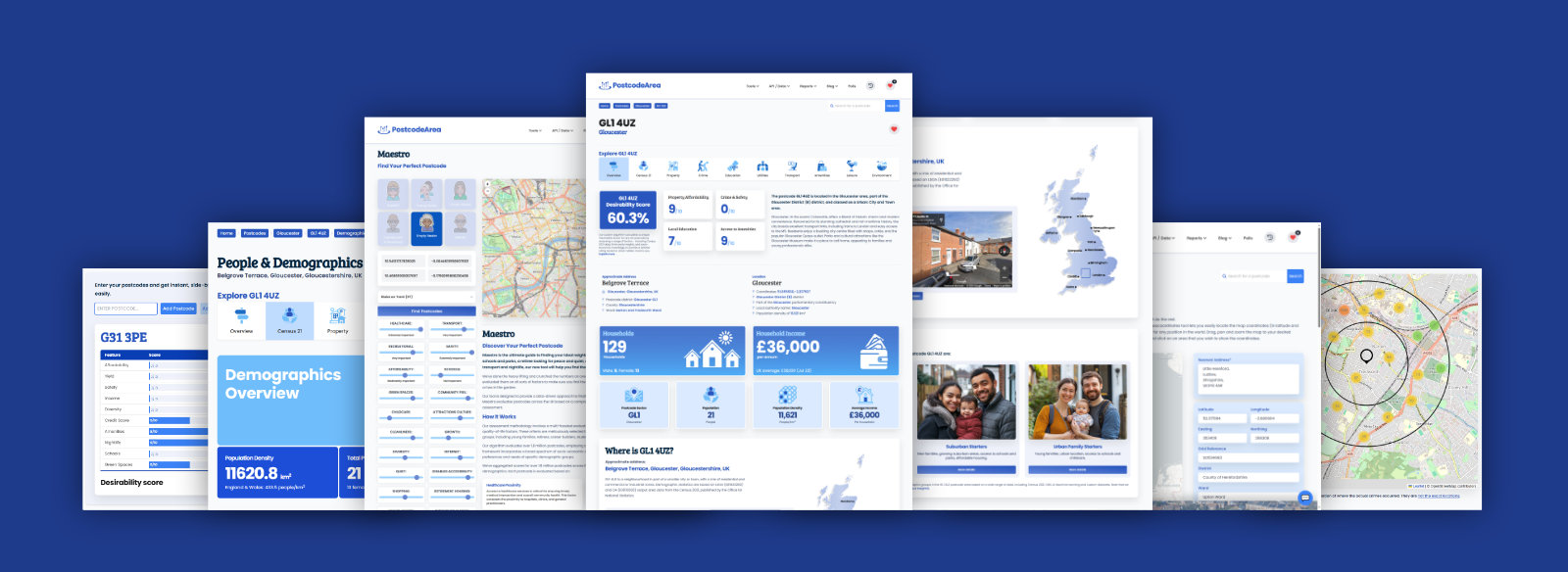L4 (Liverpool)
Liverpool (L4) Postcode Area
Liverpool, in Merseyside, is a and historic city known for its rich maritime heritage and famous music scene. Living here means enjoying a diverse community with easy access to excellent transport links, including trains and ferries. The city boasts an array of amenities, from bustling markets to trendy eateries. Explore iconic attractions like the Albert Dock, The Beatles Story, and the stunning waterfront. With its lively cultural scene and numerous parks, Liverpool offers a fantastic lifestyle for residents.
Overview
Liverpool (L4) postcode district is located in the ceremonial county of Merseyside, and is part of the Liverpool postal town.
The L4 postcode in Liverpool, Merseyside, is a vibrant area characterised by a diverse community and ongoing urban regeneration. Key statistics include a population density of 20,481.9 people per sq km, an average house price of £89,000, and a crime rank of 544 out of 32,482, indicating a relatively safe environment. The average salary in the area is £30,030, which is above the UK average.
Settlements within L4 include:
Anfield, Walton
People and Demographics
Demographics
The L4 area has a population that is predominantly 91.2% White, with smaller representations of Asian (2.7%), Black (2%), and Mixed (2%) ethnic groups. The average age of residents is 40.7 years, matching the UK average. Marital status shows a community with 44.6% single individuals, 37.1% married, and 15.5% either divorced or widowed, reflecting a youthful and dynamic population.
Unemployment
Percentage of people in Liverpool L4 who are classed as being unemployed at Census 2021.
An unemployment rate of 5% in Liverpool L4 is slightly above the UK average of 4.3%, indicating a moderate level of joblessness.
While some residents may face employment challenges, the rate still suggests a functioning local economy. Efforts to boost job opportunities could further enhance community stability and support the area's long-term growth.
Diversity
Percentage of residents in the L4 postcode region who identify as white.
With 84% of Liverpool L4residents identifying as White, this postcode has a relatively homogenous population with some ethnic diversity.
While the majority share common backgrounds, the inclusion of different cultures brings varied experiences and enriches the community's social fabric.
Population Growth
Population growth means that the population of Liverpool L4 is increasing by 2% each year.
Across the UK, (England, Scotland, Northern Ireland and Wales), the average population grown from 2023-2024 is 0.66%.
Children
Are under 18 years old
18% of Liverpool L4 are under the age of 18 at the time of the Census 2021.
Liverpool L4 aligns closely with the UK average of 17.4%. This indicates a balanced mix of families and other household types, with amenities catering to both children and adults.
Retired
Are enjoying retirement
17% of Liverpool L4 are retired at the time of the Census 2021.
Liverpool L4 aligns closely with the UK average of 16%, a mixed community of working-age individuals and retirees. Local amenities are likely to be diverse, and cater to both younger and older residents.
Census 2021 Demographics
Who lives and works in L4?
Analysing the L4 population's characteristics, including age distribution and cultural diversity, provides valuable insights into the composition of the community.
Population
Analysing the L4 population's characteristics, including age distribution and cultural diversity provides valuable insights into the composition of a local community.
Demographics
The L4 area has a population that is predominantly 91.2% White, with smaller representations of Asian (2.7%), Black (2%), and Mixed (2%) ethnic groups. The average age of residents is 40.7 years, matching the UK average. Marital status shows a community with 44.6% single individuals, 37.1% married, and 15.5% either divorced or widowed, reflecting a youthful and dynamic population.
Population Growth
Population growth means that the population of Liverpool L4 is increasing by 2% each year.
Across the UK, (England, Scotland, Northern Ireland and Wales), the average population grown from 2023-2024 is 0.66%.
Children
of Liverpool L4 are under the age of 18 at the time of the Census 2021.
Retired
of Liverpool L4 are retired at the time of the Census 2021.
Gender Ratio
50% female
Gender ratio in census data means the number of males for every 100 females in a population, helping us understand the balance between men and women in a specific area.
Age Distribution
are adults
Age distribution refers to how different age groups are spread within a population, showing the number of people in each age range. This helps understand the population's structure and potential needs.
Age Distribution
"Age Distribution by 5-year bands" in the Census 2021 breaks down the population into groups based on age ranges, each spanning five years (e.g., 0-4, 5-9, 10-14, etc.). This helps to see how many people fall into each age group, providing a clear picture of the age structure in an area.
Living Arrangements
"Living Arrangements" in the Census 2021 refers to people's relationship status and how they live with others. It includes whether someone is married, in a civil partnership, cohabiting as a couple, separated, divorced, or single, and whether they live with a partner, alone, or with others.
Legal Partnership
Legal partnership status of residents in the Liverpool (L4) district, offering insights into the diversity of relationship statuses in the area. This dataset classifies residents aged 16+ in England & Wales by their partnership status.
Gender Identity
"Gender Identity" in the Census 2021 refers to how people personally identify their gender, which may or may not align with the sex they were assigned at birth. It includes options like male, female, non-binary, or other identities, reflecting how individuals see themselves.
Postcodes
Dig even deeper into the L4 postcode:
Click on an postal code below for more information about the area. Each postcode give you a comprehensive overview of the postcode neighbourhood, including address, demographics, crime, transport, amenities and house prices in Liverpool (L4).
Word Cloud for L4
We've trawled social media and the web to discover words that describe the postcode district of L4:
Nearby Towns & Cities
L4 Postcode area
The following towns and villages can be found close to Liverpool L4:
Liverpool
Population 552,267
1.4 miles
A key maritime city, important in the 18th-20th centuries as a hub for trade and migration. Famous for the Beatles and landmark The Royal Liver Building, the city is a thriving hub of commerce, industry and culture.
Nearest Postcode Areas:
Birkenhead
Population 142,968
3.6 miles
Dating back to the 12th century, Birkenhead has an important history, especially during the Industrial Revolution when it gained the status of town. Best known for shipbuilding industries, the area suffered from a period of decline until recently, with regeneration planned.
Nearest Postcode Areas:
Bebington
Population 57,336
4.5 miles
Bebington is a charming suburb on the Wirral Peninsula, offering a peaceful community vibe while still being a quick hop over the River Mersey to vibrant Liverpool, with its fantastic shopping, dining, and cultural attractions.
Nearest Postcode Areas:
Bootle
Population 51,394
4.9 miles
The locals of Bootle are often described as down-to-earth. Although not a common favourite, the town continues to redevelop so that it can offer even more, alongside the already popular New Strand Shopping Centre. Property prices are fairly cheap in Bootle but admittedly because of its current living conditions.
Nearest Postcode Areas:
Litherland
Population 18,507
5.4 miles
Litherland, located in Merseyside, offers a close-knit community with a vibrant mix of local shops, green spaces, and easy access to both Liverpool city centre and the beautiful Sefton coastline, making it a perfect balance between urban convenience and coastal charm for those looking to settle down.
Nearest Postcode Areas:
Prescot
Population 37,911
6.6 miles
Nestled in the heart of the picturesque Merseyside countryside, Prescot boasts a rich history dating back to medieval times, charming historic buildings, a bustling market square, and a strong sense of community spirit that makes it a truly unique and welcoming place to call home.
Nearest Postcode Areas:
Crosby
Population 50,044
6.9 miles
The coastal town of Crosby is a great spot for shopping, dining out, and even the nightlife which isn't often talked about. The locals are known to be friendly and accommodating; and for residents and long-term guests, the town offers a quiet, village-like life, yet with many modern amenities available.
Nearest Postcode Areas:
Local Authorities
L4 Postal Town
The L4 postcode includes the following local authorities:
- Liverpool
Crime in L4
How safe is this postcode sector?
Crime levels in the L1 postcode area have fluctuated over the years, with recent statistics showing a decrease in overall crime rates. However, certain areas within the postcode still remain hotspots for criminal activity.
Key Hotspots
One of the key hotspots in the L1 postcode area is the city centre, particularly around popular nightlife spots and shopping areas. Theft and anti-social behaviour are common in these areas, as they attract a large number of visitors.
Historical Crime Issues
In the past, the L1 postcode area has faced challenges with drug-related crime and gang activity. These issues have been addressed through targeted policing efforts and community engagement initiatives.
Current Policing Priorities
The local police force in the L1 postcode area has set priorities to focus on reducing anti-social behaviour, tackling drug-related crime, and improving community relations. By increasing patrols in key hotspots and working closely with local residents, the police aim to create a safer environment for all.
Crime levels in the L1 postcode area have fluctuated over the years, with recent statistics showing a decrease in overall crime rates. However, certain areas within the postcode still remain hotspots for criminal activity.
Key Hotspots
One of the key hotspots in the L1 postcode area is the city centre, particularly around popular nightlife spots and shopping areas. Theft and anti-social behaviour are common in these areas, as they attract a large number of visitors.
Historical Crime Issues
In the past, the L1 postcode area has faced challenges with drug-related crime and gang activity. These issues have been addressed through targeted policing efforts and community engagement initiatives.
Current Policing Priorities
The local police force in the L1 postcode area has set priorities to focus on reducing anti-social behaviour, tackling drug-related crime, and improving community relations. By increasing patrols in key hotspots and working closely with local residents, the police aim to create a safer environment for all.
Education
Highest Rated Schools in L4
As rated by Ofsted
- St John's Catholic Primary School
Fountains Road, Liverpool, L4 1UN
Outstanding - All Saints' Catholic Voluntary Aided Primary School
Oakfield, Liverpool, L4 2QG
Outstanding - St Francis de Sales Catholic Junior School
Hale Road, Liverpool, L4 3RL
Outstanding - St Francis de Sales Catholic Infant and Nursery School
Margaret Road, Liverpool, L4 3RX
Outstanding - Florence Melly Community Primary School
Bushey Road, Liverpool, L4 9UA
Outstanding - St Matthew's Catholic Primary School
Queens Drive, Liverpool, L4 8UA
Outstanding - Anfield Road Primary School
Anfield Road, Liverpool, L4 0TN
Good - Kirkdale St Lawrence CofE VA Primary School
Fonthill Road, Liverpool, L4 1QD
Good - Arnot St Mary CofE Primary School
Arnot Street, Liverpool, L4 4ED
Good - Gwladys Street Primary and Nursery School
Walton Lane, Liverpool, L4 5RW
Good

Unlock the full power of postcode insights.
Data is meaningless without context. Reveal the stories behind a neighbourhood, and make smarter decisions with data you can trust. Gain unlimited access to detailed statistics, exclusive reports, and essential tools.
PostcodeArea is grateful to our sponsors for their support.






